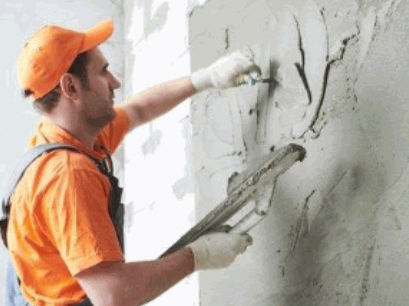Are you planning to plaster your walls but unsure about which type of cement to use?
Explore the different types of cement commonly used for plastering, including Ordinary Portland Cement, Portland Pozzolana Cement, Rapid Hardening Cement, and more.
We will also discuss important factors to consider when choosing the right cement for your project, such as strength, durability, setting time, and cost.
Discover the best cement for internal, external, and decorative plastering, as well as valuable tips for a successful plastering job.
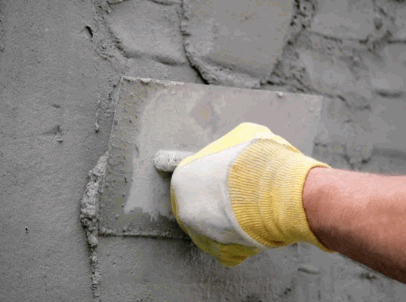
What Is Plastering?
Plastering is a technique of covering walls and ceilings with a smooth, durable surface to enhance the structural integrity and aesthetics of a building. It involves applying a layer of material, such as cement or plaster, to create a strong and even finish.
This meticulous process not only provides a visually appealing look but also plays a vital role in ensuring the longevity of a structure. The selection of plastering materials varies depending on the type of surface and environmental conditions. For instance, gypsum plaster is commonly used for interior walls, while cement plaster proves suitable for exteriors due to its weather-resistant properties. Lime plaster, on the other hand, is a preferred choice for historical buildings due to its breathability and compatibility with old structures.
Gain insights: How To Clean Plastering Tools
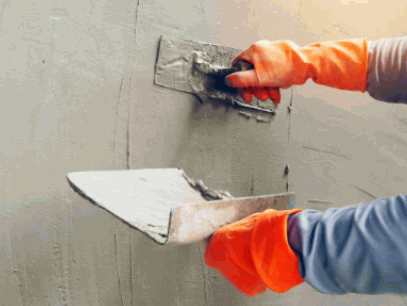
Why Is Choosing the Right Cement Important for Plastering?
Selecting the right type of cement is crucial for effective plastering due to its direct impact on the quality, durability, and adhesion strength of the plastered surface. The choice of cement significantly influences the overall performance and longevity of the plastered structure.
When embarking on a plastering project, one must consider cement quality as the foundation of a successful finish. High-quality cement not only enhances the strength and durability of the plaster but also plays a vital role in preventing cracks and ensuring a smooth surface. Without proper adhesion strength, the risk of detachment or flaking increases, leading to an unsightly and unstable finish.
It is crucial to achieve a strong bond between the cement and underlying surfaces to guarantee a lasting plaster. Ensuring compatibility between the chosen cement and the surface materials is essential for seamless integration and uniform appearance.
Types of Cement Used for Plastering
Various types of cement are utilized for plastering applications, each with unique characteristics and suitability. Common types include Portland Cement, Ordinary Portland Cement (OPC), and Portland Pozzolana Cement (PPC), which are distinguished by their composition and performance grades.
Portland Cement, known for its high compressive strength, is widely used in plastering where durability is a key factor. OPC, on the other hand, offers rapid strength development, making it suitable for projects with tight timelines. PPC, a blend of pozzolanic materials, enhances workability and reduces the heat of hydration, ideal for mass concrete works. Each type caters to specific requirements, highlighting the importance of selecting the appropriate cement based on the desired outcomes and project specifications.
Ordinary Portland Cement (OPC)
Ordinary Portland Cement (OPC) is a primary choice for plastering due to its versatility and adherence to strength requirements. It is commonly used in various environmental conditions, making it a reliable option for different construction projects.
OPC possesses properties that make it an ideal material for creating strong and durable plasterwork. Its high compressive strength and low heat of hydration contribute to its long-lasting performance. OPC offers excellent resistance to harsh weather conditions, chemical attacks, and wear, ensuring the longevity of the plastered surfaces.
Regarding meeting diverse construction needs, OPC stands out for its versatility. Whether used in residential buildings, commercial structures, or infrastructure projects, OPC provides consistency in performance and quality, making it a preferred choice among builders and contractors.
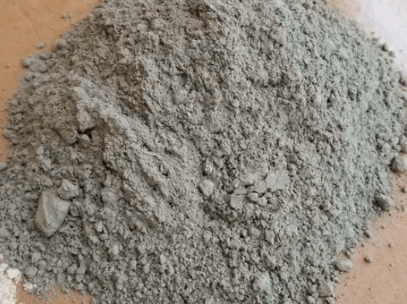
Portland Pozzolana Cement (PPC)
Portland Pozzolana Cement (PPC) is known for its ability to enhance surface protection and provide excellent crack resistance in plastered structures.
Its incorporation of pozzolanic materials such as fly ash results in increased densification of concrete, leading to reduced permeability and improved durability.
PPC has been widely used in various construction projects, from residential buildings to infrastructure developments, demonstrating its reliability in creating long-lasting plaster finishes. It surpasses traditional cement by offering better resistance to chemical attacks and minimizing the risk of cracks due to its superior binding properties.
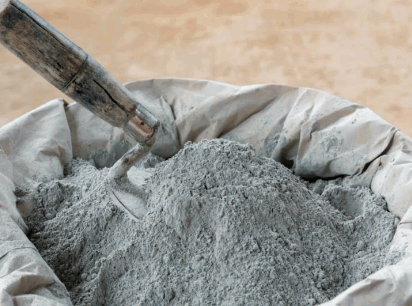
Rapid Hardening Cement (RHC)
Rapid Hardening Cement (RHC) is a specialized cement type that offers quick setting times and high adhesion strength, making it ideal for plastering projects requiring fast completion and enhanced workability. Its rapid curing properties ensure efficient plaster application.
RHC, due to its rapid hardening characteristics, significantly reduces the time needed for the plaster to be ready for finishing touches. The quick setting times also contribute to the overall efficiency of the plastering process, allowing for quicker project completion.
The high adhesion strength of RHC enhances the bond between the plaster and the substrate, ensuring long-lasting durability and structural integrity. This feature makes RHC particularly suitable for areas exposed to high moisture or temperature fluctuations where traditional cement types may struggle to maintain adhesion.
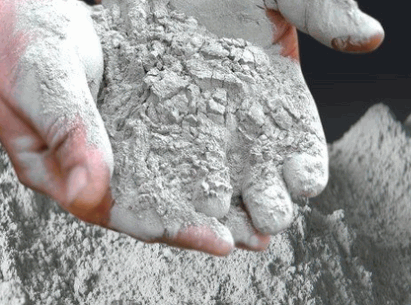
Sulphate Resisting Cement (SRC)
Sulphate Resisting Cement (SRC) is specifically designed to enhance durability and provide a smooth finish on plastered surfaces exposed to harsh environmental conditions or chemical agents. Its resistance to sulfates makes it suitable for long-lasting plaster applications.
The unique properties of SRC make it an excellent choice for projects that require a high level of resistance to environmental challenges. Its ability to withstand the corrosive effects of sulfates and other chemicals sets it apart from traditional cement mixtures.
When considering plastering surfaces that are exposed to harsh climates or areas prone to chemical exposure, such as industrial facilities or wastewater treatment plants, SRC proves to be the preferred option for achieving a durable finish.
Along with its unmatched durability, SRC offers exceptional crack resistance, ensuring that the plastered surface maintains its integrity over time. This feature not only enhances the appearance of the structure but also contributes to its longevity.
SRC requires minimal maintenance, reducing the overall upkeep costs associated with the plastered surfaces. Its longevity and resistance to cracking alleviate the need for frequent repairs, making it a cost-effective choice in the long run.
SRC exhibits compatibility with various substrates, including concrete, blockwork, and masonry, providing versatility for different construction projects. This flexibility enables contractors to utilize SRC in a wide range of applications, enhancing the overall quality and longevity of the plastered surfaces.
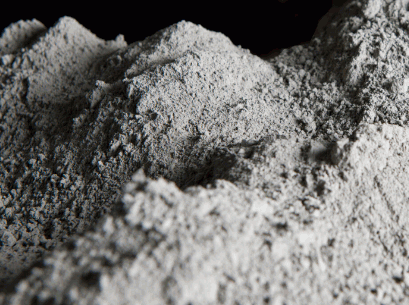
White Cement
White Cement is a specialized variety that offers consistent color and extended open time for plastering applications where aesthetic appeal and color uniformity are essential. Its unique formulation ensures a uniform and bright finish on plastered surfaces.
White Cement’s ability to maintain a uniform color throughout the application process makes it highly suitable for projects that require a pristine finish, such as hospitals, schools, and high-end residential buildings. The extended open time of White Cement allows for more flexibility in application, enabling smoother finishes and intricate designs to be achieved with ease. This feature is particularly advantageous in projects where time constraints are a significant factor.
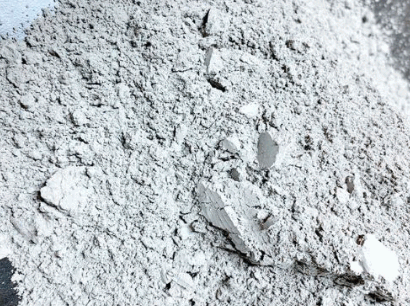
Colored Cement
Colored Cement offers decorative possibilities and compatibility with various pigments, allowing for vibrant and customized plaster finishes. Its range of colors and cost considerations make it a popular choice for projects requiring visually appealing surfaces.
Colored cement provides a durable and long-lasting solution that not only enhances the aesthetic appeal of a space but also adds a layer of protection to the underlying surface. The versatility of colored cement allows for experimentation with different textures and design concepts, enabling architects and designers to create unique and eye-catching finishes.
Colored cement is not only visually appealing but also eco-friendly, as it can be manufactured using recycled materials, contributing to sustainable building practices and reducing environmental impact. The ease of application and maintenance of colored cement make it a practical choice for both residential and commercial projects.

Factors to Consider When Choosing Cement for Plastering
Several critical factors must be evaluated when selecting the appropriate cement for plastering projects, including strength requirements, setting time, workability, and water retention capabilities. Each factor plays a significant role in determining the overall performance and quality of the plastered surface.
Strength requirements are vital as they determine the durability and load-bearing capacity of the plaster. The type of cement chosen must adhere to the specific demands of the project to ensure structural integrity. Setting time directly affects project timelines and efficiency, impacting the pace of construction work and subsequent stages. Workability considerations address how easily the plaster can be applied and shaped, directly influencing labor requirements and the overall finish. Water retention properties play a crucial role in plaster curing, ensuring proper hydration for optimal strength development and long-term stability.
Strength and Durability
Strength and durability are paramount factors to prioritize when choosing cement for plastering, as they directly influence the longevity and resilience of the plastered surface.
Choosing the right cement type plays a crucial role in determining the overall quality and lifespan of a plastered surface. High-strength cement provides the necessary structural integrity to withstand external pressures and environmental factors. Excellent crack resistance properties prevent the development of fissures that could compromise the finish. The relationship between strength and durability in plastering applications is a delicate balance that can significantly impact the success of a project. From residential homes to commercial buildings, the importance of using durable cement cannot be overstated.
Projects such as bridges, high-rise structures, and industrial facilities demand cement that can endure heavy loads and endure harsh conditions over time. The utilization of superior cement types ensures that these structures maintain their strength and integrity over years of service, offering peace of mind to builders and occupants alike.
Setting Time
The setting time of cement significantly impacts the plastering process, requiring careful consideration of application techniques and primer application to optimize the setting duration. Proper management of setting times ensures efficient and effective plastering outcomes.
One essential technique for managing setting times is to control the water content in the mix meticulously. By adjusting the amount of water added, plasterers can influence the setting time of the cement. Using additives like accelerators or retarders can further fine-tune the setting process to suit specific project requirements.
Primer application plays a crucial role in regulating cement curing as it helps in enhancing adhesion to the substrate and controlling absorption rates. By applying a primer before plastering, contractors can create a stable base for the plaster to adhere to, thus influencing the overall setting time.
Adjusting setting times based on ambient conditions, such as temperature and humidity, is also vital. Extreme weather conditions can accelerate or slow down the setting process, necessitating adjustments to ensure optimal curing. By monitoring environmental factors and making necessary adaptations, construction teams can maintain control over setting durations and prevent potential issues.
The setting time not only impacts the quality of the plaster finish but also affects project timelines significantly. Delays in setting can lead to project setbacks and increased costs, highlighting the importance of precise time management in plastering projects.
Workability
Workability is a crucial aspect to consider when choosing cement for plastering, as it influences the ease of application, attainment of a smooth finish, and consistency in the plastered surface texture. Optimal workability ensures uniform and high-quality plaster finishes.
Various cement types can impact the workability of plaster mixes differently. For instance, Portland cement tends to provide good workability, making it easier for the applicator to spread the plaster evenly. On the other hand, gypsum plaster offers excellent workability, allowing for faster application and smoother finishes. By using additives like plasticizers or superplasticizers, you can further enhance the workability of the plaster mix, making it more flowable and easier to manipulate.
Water Retention
Water retention properties of cement play a vital role in regulating the curing process, ensuring compatibility with various surfaces, and extending the open time for plaster application. Effective water retention enhances adhesion strength and promotes consistent plaster quality.
Water retention in cement acts as a crucial factor in creating a workable mixture that can be applied smoothly on different surfaces without compromising quality.
The ability of cement to retain water helps stabilize the hydration process, leading to improved adhesion and long-term durability of the plastered surface.
Optimizing water retention not only facilitates better workability but also allows for sufficient bonding with substrates, enhancing the overall strength and performance of the plaster layer.
Cost
Cost considerations are essential when selecting cement for plastering projects, balancing the initial investment with long-term durability and cost-effectiveness. Choosing a cement type that offers optimal performance and longevity at a competitive price point ensures value-driven plastering solutions.
Factors such as the type of project, environmental conditions, and required strength play a crucial role in determining the appropriate cement choice. Different cement types, like Ordinary Portland Cement (OPC), Portland Pozzolana Cement (PPC), or White Cement, vary in their composition, strength, and suitability for various applications.
When assessing cost-effectiveness, it’s important to consider not only the upfront material expenses but also the labor and maintenance costs over time. Investing in a higher grade of cement may initially seem pricier, but it can result in overall savings due to its durability and reduced need for repairs.
For those seeking budget-friendly options without compromising quality, alternatives like Fly Ash-based cement or blended cement can offer a balance between cost and performance. These options provide satisfactory strength and durability at a more economical price point, making them attractive choices for cost-conscious projects.
To maximize value in plastering projects, employing efficient application techniques, proper curing methods, and utilizing additives or admixtures can enhance the performance and longevity of the plastered surface. Proactive maintenance and periodic inspections can help prevent costly repairs in the future, ensuring that the initial investment in quality cement pays off in the long run.
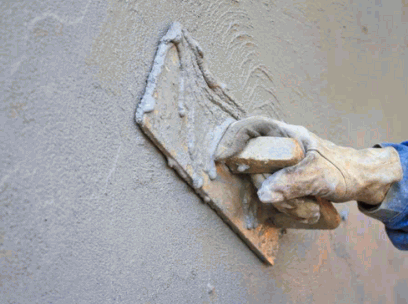
Which Type of Cement is Best for Plastering?
Determining the best type of cement for plastering depends on specific project requirements, such as the need for surface protection, adhesion strength, and durability. Different cement varieties excel in distinct applications, catering to internal, external, and decorative plastering needs.
Portland cement, known for its high adhesion strength, is commonly used for both internal and external plastering due to its excellent binding properties. On the other hand, masonry cement offers exceptional durability, making it a reliable choice for long-lasting plaster finishes in high-traffic areas. For decorative projects requiring aesthetic appeal, white cement is a popular option, providing a smooth and elegant surface finish.
When selecting the optimal cement type for plastering, consider the environmental conditions, desired final appearance, and the specific demands of the project. By understanding the unique characteristics of each cement type, you can ensure the successful execution of your plastering project with high-quality and durable results.
For Internal Plastering
Internal plastering projects require cement types that prioritize achieving a smooth finish, ensuring consistency in texture, and promoting optimal adhesion to interior surfaces. Selecting the right cement for internal applications is crucial for creating visually appealing and durable plastered interiors.
Regarding cement for internal plastering, it’s essential to consider the specific requirements to ensure a high-quality finish.
One common type of cement used for such projects is Portland cement, known for its versatility and strength. For a more refined finish, many opt for gypsum plaster or lime plaster, which offer better workability and a smoother texture.
To enhance adhesion strength, it’s advisable to mix the cement with the right proportion of sand and water, ensuring a strong bond with the underlying surface. Selecting the wrong cement can result in poor adhesion, cracking, and a compromised overall appearance, so it’s crucial to choose wisely.
For External Plastering
External plastering necessitates the use of waterproof cement varieties that offer excellent crack resistance and protection against environmental elements. Choosing the right cement for external applications ensures long-term durability, weather resistance, and aesthetic appeal in exterior plastered surfaces.
Regarding selecting cement for external plastering, there are several key considerations to keep in mind. The cement must be specifically designed for exterior use, as it needs to withstand exposure to harsh weather conditions such as rain, sunlight, and temperature variations. Opting for waterproof cement is crucial to prevent water penetration, which can lead to structural damage and deterioration of the plastered surface over time.
One of the main advantages of using waterproof cement in external plastering is its ability to create a protective barrier against moisture, thereby enhancing the longevity of the surface. Waterproof cement helps maintain the structural integrity of the plastered area by preventing water seepage and the formation of cracks.
There are various types of cement that are well-suited for crack resistance in external plastering applications. For instance, fiber-reinforced cement is known for its high tensile strength and ability to reduce cracking caused by external forces. Similarly, polymer-modified cement offers enhanced flexibility, making it resistant to cracking due to temperature changes and settling of the building.
Despite the crack-resistant properties of certain cement types, external plastering still faces challenges from environmental factors such as humidity, temperature fluctuations, and exposure to UV rays. These factors can accelerate the deterioration of the plastered surface if not properly addressed through the use of weatherproof cement and protective finishes.
The significance of weatherproof finishes cannot be overstated in external plastering. By choosing the right cement with waterproof and crack-resistant properties, and applying weatherproof coatings, you can ensure the longevity and durability of exterior plastered surfaces, while maintaining their aesthetic appeal.
For Decorative Plastering
Decorative plastering projects benefit from using specialized cement varieties like colored or hydraulic cement, offering customization options and unique finishes. These cement types enhance the aesthetic appeal, design flexibility, and visual impact of decorative plastered elements.
Colored cement opens up a world of possibilities, allowing for vibrant hues and bespoke color combinations that can transform a space. On the other hand, hydraulic cement offers increased strength and durability, making it suitable for both interior and exterior applications. Utilizing these cement variants, designers can create intricate patterns, textured surfaces, and seamless transitions between different elements of a room.
- By experimenting with different application techniques and tools, such as trowels, brushes, and stamps, artisans can achieve a plethora of artistic effects.
- For long-lasting decorative appeal, it’s essential to properly seal and maintain plastered surfaces to protect against wear and tear, moisture, and fading over time.
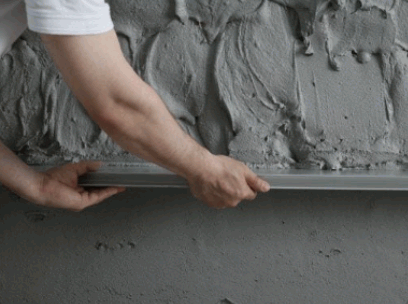
Tips for Proper Plastering with Cement
Achieving excellent plastering results with cement requires attention to technique, surface preparation, and finishing details to ensure a smooth and durable outcome. Proper application methods, material selection, and adherence to best practices are essential for successful cement plastering projects.
One crucial aspect of achieving a flawless cement plastering finish is the adequate water content in the mix. Too much water can weaken the plaster, leading to cracks and reduced durability, while too little water makes the application challenging and prone to uneven drying. Ensuring a consistent mix ratio and proper hydration of the cement is vital for optimizing adhesion strength and crack resistance.
